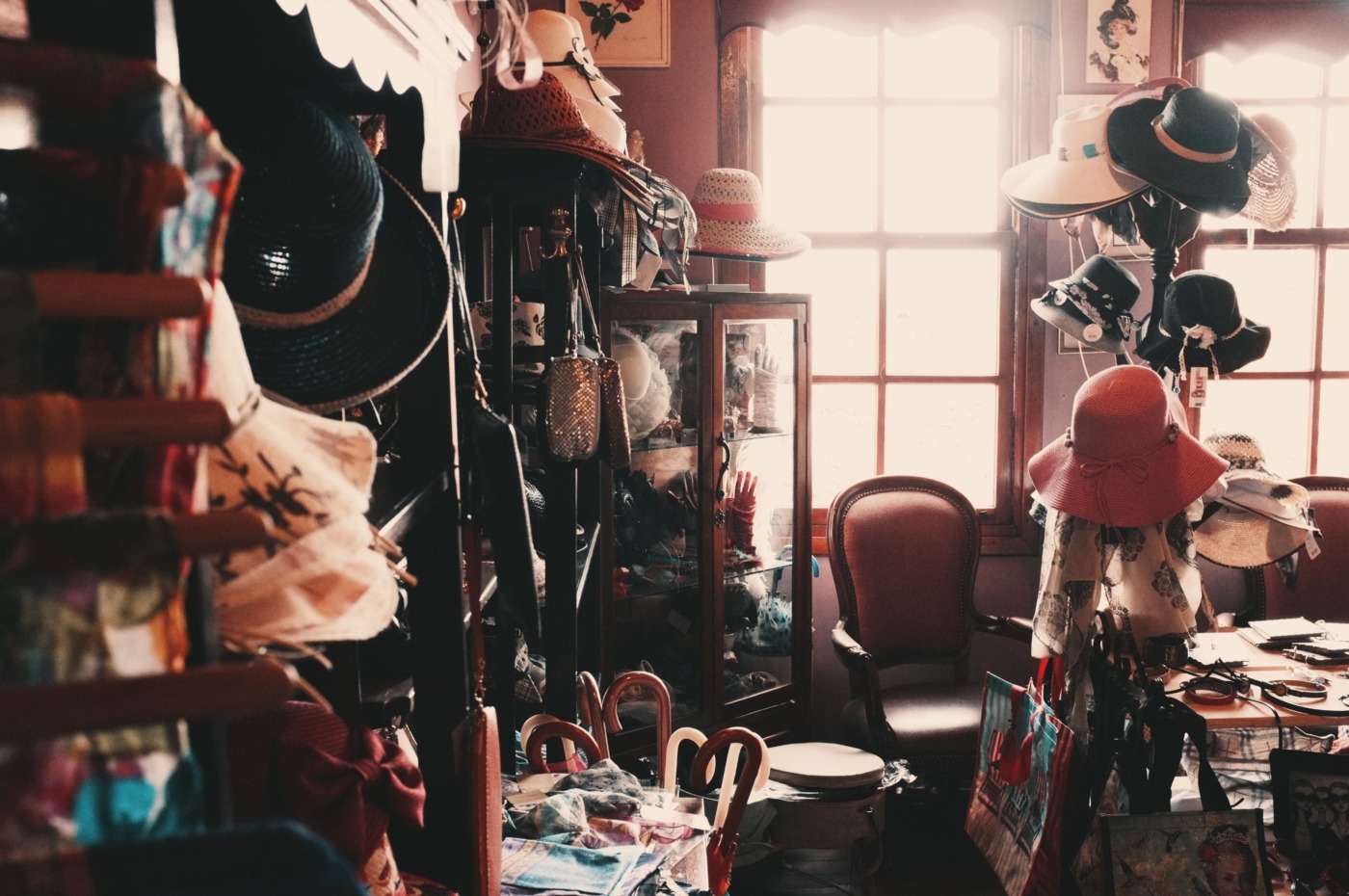A definitive guide to second-hand shopping
Anyone who has ever complimented an item of my clothing will likely have been met with the remark, “thanks – it’s from a charity shop, it was only [insert impressively low price here]!”. Nothing beats the excitement of finding something unique at a bargain price, and, on top of this, the reuse of fabrics helps to reduce the environmental impact of the fashion industry. I’d recommend second-hand shopping to anyone.
The Warwickshire area is blessed with an array of great charity and second-hand shops as well as frequent vintage fairs and outlets. However, the quality of goods can vary significantly. Here is my curated guide to finding the best buys, based on a lifetime of hits and misses:
Tops and knitwear
Tops and knitwear are the easiest items to pick up second-hand because size doesn’t need to be exact. Oversized t-shirts are timeless. Wear loose, with a belt if they’re longer or tie a knot at the waist. If you have some extra time on your hands, Pinterest has plenty of ideas for customising large t-shirts by cutting, reshaping and sewing sections. I’ve seen basic tops transformed into bralettes, fitted crop tops and even mini dresses. Likewise, big slouchy jumpers remain very popular.
You can find surprisingly good quality knitwear in charity shops, particularly if you scour both men’s and women’s sections: one of my favourite purchases was a Jaeger 100% wool men’s sweater for just £5. As I’m a petite female, the fit was boxy and baggy, so I wore it tucked into boyfriend jeans or shorts and simultaneously kept my mother happy that I was ‘wrapping up warm’ at university.
Trousers, jeans, and skirts
Trousers and jeans are more difficult because it’s unlikely you’ll find your exact waist and length fit. Those fabulous 90s style jeans that are always at vintage fairs fundamentally don’t run small enough for me, but if you are determined to find some pre-loved trousers, the fairs probably have the best selection. The quality is often great too, with brands such as Levi which use hard-wearing, thicker denims. There are, of course, ways to alter denim, but this is somewhat expert level second-hand shopping and a challenge I personally would be unwilling to attempt.
Skirts, on the other hand, are much easier to shop for and alter because the fabrics would be much thinner. The waistline should fit (with or without the assistance of a belt) but length can be adjusted to preference. Long old-fashioned floral skirts can be picked up for pennies but reinvented by creating a flowy high-low hem – there are lots of templates online.
Unusual buys
For more unusual buys, vintage fairs might be your sanctuary. Having consulted a number of friends, the consensus seems to be the people attending a vintage fair are looking for interesting or exotic clothing that isn’t made anymore, that is unique and seems to be from a different decade.
The best local venue I’ve found to fit this mould is the ‘£15 per kilo’ vintage fair that takes place regularly in Coventry Cathedral. The range is fantastic and the clothes are distinctly different from what would be found on the high street, or indeed at some of the fairs that come to Warwick SU which class last season Adidas or an old society tour vest as ‘vintage’. Many fairs use the term rather liberally so it’s good to consider whether it’s worth paying more.
Where to go in Coventry and Leamington
As far as second-hand shops go, Leamington Spa has an excellent selection – my friends and I have created a ‘charity shop trail’ that runs from Age UK in the South of Leamington, winding all the way up to the Oxfam on Warwick Street. Scouring all of them can take the best part of a day. However, they are relatively pricey for second-hand shops, particularly in the central areas.
Coventry, on the other hand, has shops that are more dotted about, but they tend to be far cheaper. The large centralised British Heart Foundation typically has great finds.
Second-hand shops and fairs are cost-effective and eco-friendly places to look before you dive into standard retailers to find your next outfit. By using these tips amongst others, navigating vintage and second-hand stores should be rife with brag-worthy success. It shouldn’t take up too much of your time, and you might even make a charitable donation in the process!

Comments (1)